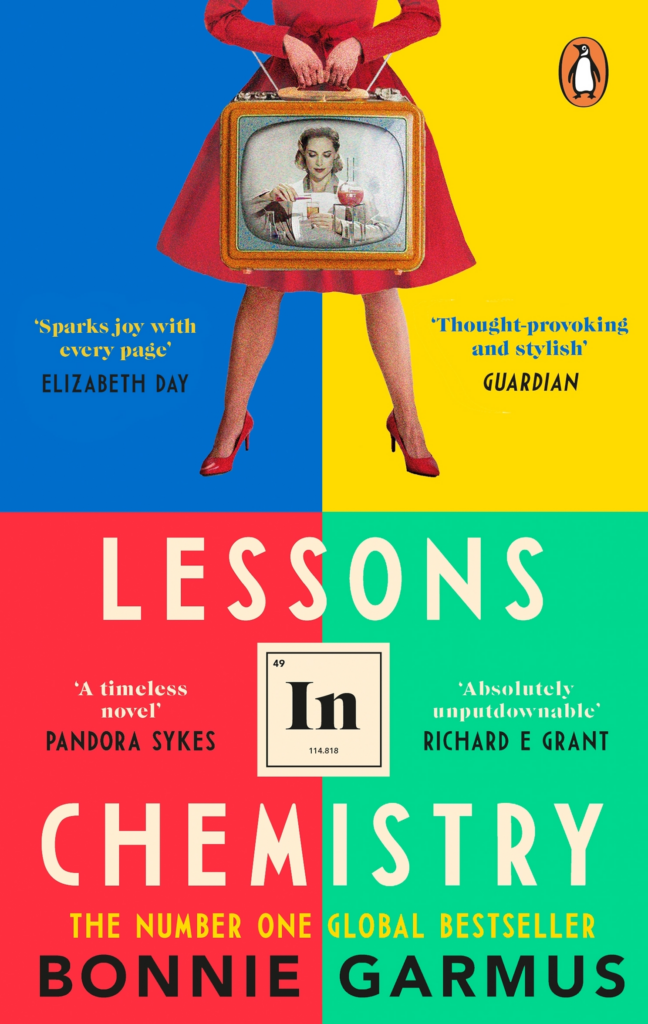About a few months ago, I wrote a blog on the book Lessons in Chemistry by Bonnie Garmu because I just couldn’t keep the book down without completing it. There ain’t any book that I have been more excited for to see on screen. I watched Lessons in Chemistry finally on AppleTV+. I have only heard from people on how any book is better than movie/series and I never was excited for any and this was the first time after watching the series, I was truly able to understand what people spoke about. I am still confused if I like the book better or the series. But let’s just look at the differences that stood out for me in the book vs the series.


My first and the foremost difference and actually I liked the version in the series better than on book is Harriet, brought to life by the talented Aja Naomi King, emerges as a vibrant character in the TV series, contrasting the portrayal in the book. While the book presents her as an older woman with grown children and a troubled spouse, the show depicts her as a young mother with two little ones and a respected partner. This shift humanizes her, giving her a relatable complexity. Moreover, the show introduces her earlier, forging a deep bond with Cal, who occasionally helps with her kids. Harriet’s on-screen persona exudes strength and independence, passionately advocating against the city’s plans to disrupt her predominantly Black neighbourhood with a freeway.
In the book, Harriet Sloane, an older white woman with grown children, endures an unhappy marriage with a sexist, abusive, alcoholic husband. Conversely, the TV adaptation she is a young Black woman with a soldier husband overseas. She’s a mother, legal aide, environmentalist, and civil rights activist, adding diversity and social commentary to the storyline.
Next to list out a few differences that I spotted:
- In the book, Elizabeth Zott, a capable chemist at Hastings Research Institute, struggles against the bias of her colleagues who belittle her due to her lack of a PhD, despite her managerial responsibilities. Conversely, the TV portrayal depicts her frustration as she’s relegated to a lesser role, undervalued by male coworkers who perceive her primarily for her appearance.
- In the book, Calvin and Elizabeth share a serendipitous moment outside a theater, where he accidentally vomits on her due to food poisoning. She kindly takes care of him afterward. Conversely, the TV adaptation shifts the setting to a company pageant, where Elizabeth’s discomfort highlights workplace sexism. Calvin’s allergic reaction to perfume leads to a similar messy encounter, fostering a connection between them.
- In the book, Calvin proposes to Elizabeth publicly, despite her reservations about marriage. She declines, leading to a heated argument, eventually resolved by agreeing to move in together. Conversely, in the show, Elizabeth firmly expresses her career ambitions and aversion to marriage and kids. Calvin supports her decisions wholeheartedly, showcasing understanding and respect.
- In the book, Elizabeth and Calvin agree to adopt a dog, named Six-Thirty after a humorous misunderstanding. Conversely, in the show, Six-Thirty enters Elizabeth’s life earlier when she finds him in her backyard. She adopts him, naming him after his habit of waking her up at the same time each morning, showing her compassionate nature.
- In the book, Elizabeth blames herself for Calvin’s death after he’s accidentally hit by a police car while chasing their dog, Six-Thirty, who got spooked during a walk. Conversely, in the show, Calvin’s fatal accident occurs when their dog’s resistance to a leash leads to him being struck by a bus, adding a poignant layer to their loss.
- In the book, Fran Frask, the head of personnel at Hastings, is portrayed as jealous and cruel, taking pleasure in Elizabeth’s misery and ultimately using her pregnancy to get her fired. However, she undergoes significant character development, eventually finding redemption working as Reverend Wakely’s secretary. In the show, Fran is depicted as sympathetic from the start, with her actions leading to Elizabeth’s dismissal stemming from societal biases rather than malice.
- In the book, Elizabeth names her daughter Mad by accident due to exhaustion and grief. Similarly, in the show, the nurse suggests Elizabeth name the baby based on her current feelings. These moments humanize Elizabeth’s experience, reflecting the overwhelming emotions and circumstances surrounding childbirth.
- In the book, Mad’s brilliance isn’t nurtured by her teacher, who mistreats her due to jealousy. Conversely, in the show, her teacher recognizes her potential and recommends her to a more suitable environment where she can flourish, humanizing the educational journey by prioritizing Mad’s growth and well-being.
- Last but not the least, in the book, Elizabeth’s happy ending sees her become Head of Chemistry at Hastings, while on the show, she finds fulfilment as a chemistry teacher. Both portrayals illustrate her professional success and contentment in different settings.
These were some of the notable differences in the book and series that stood out for me! What about you? Which of these differences stood out the most for you and why? Also was there any differences that I missed noticing?

